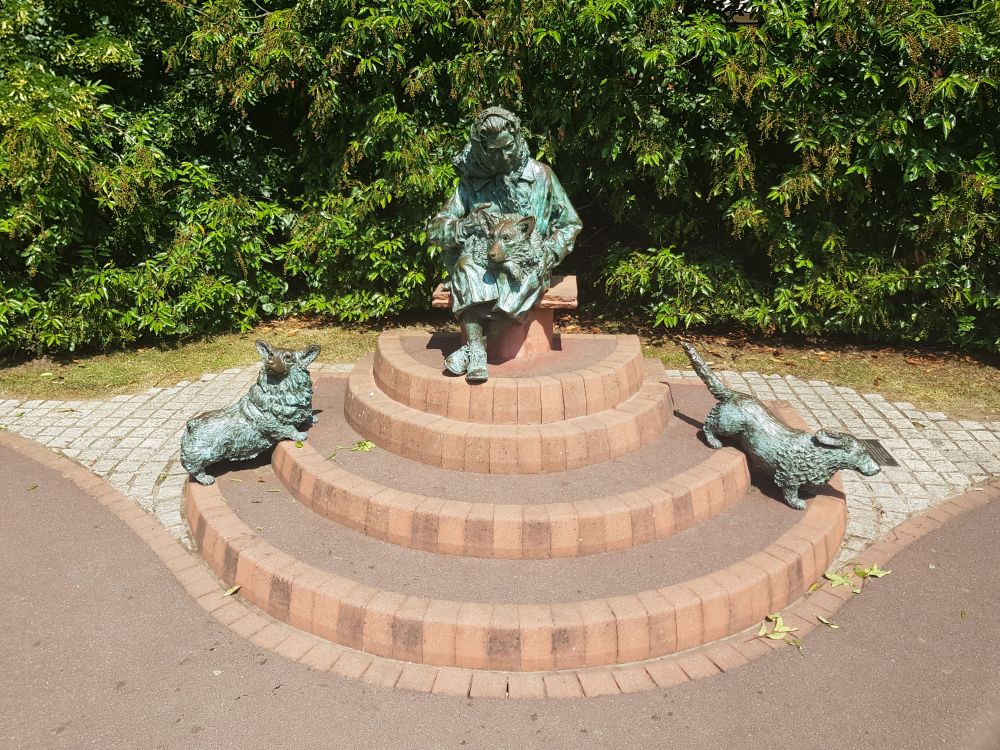To provide you with the best experience, cookies are used on this site. Find out more here.

To provide you with the best experience, cookies are used on this site. Find out more here.

To build your own Itinerary, click  to add an item to your Itinerary basket.
to add an item to your Itinerary basket.
Already saved an Itinerary?


You are here: Home > Ideas & Inspiration > Platinum Jubilee > Windsor Jubilee Facts
Royal jubilees celebrate significant periods in a monarch’s reign. Six monarchs have reached their Golden Jubilee, representing 50 years on the throne: Elizabeth II, Victoria, George III, James I (VI of Scotland), Henry III and Edward III. Victoria celebrated a Diamond Jubilee, reigning for 63 years between 1837 and 1901. Queen Elizabeth II, who did not publicly mark her Sapphire Jubilee (65 years) in 2017, was the first monarch ever to reach a Platinum Jubilee in June 2022.
Jubilees were officially celebrated from George III onwards, and Windsor has played a significant role for each monarch since, gaining and retaining many features as a direct legacy.
King George III marked the start of his Golden Jubilee on 25 October 1809 by attending a private service in Windsor with other members of the Royal Family, followed by a grand fete and firework display at Frogmore. Queen Charlotte and other members of the royal family attended a special ox roasting in the town’s Bachelors Acre. Declaring the novel occasion ‘highly amusing’ this set a template for celebrating future royal jubilees.
Queen Victoria marked her Golden Jubilee on 20 June 1887 with breakfast under the trees at Frogmore, resting place of Prince Albert, her beloved late husband. Ten years later she started her Diamond Jubilee Accession Day at Windsor Castle, attending a service with her family at St George’s Chapel. Victoria also attended a Military Tattoo held in the Quadrangle of Windsor Castle.
Queen Elizabeth II ascended the throne at the death of her father George VI on 6 February 1952, while she was on an official visit in Kenya. His funeral was held at Windsor Castle in St George's Chapel, and rather than celebrate her reign on the day of his death, she chose June instead.
Queen Elizabeth II marked the start of her Silver Jubilee on 6 February 1977 at a church service with her family at the Royal Chapel of All Saints in Windsor Great Park. On the evening of Monday 6 June, she lit a bonfire beacon at Windsor which started a chain of beacons across the country.
During the Golden Jubilee Weekend in June 2002, Queen Elizabeth II and The Duke of Edinburgh attended a church service at St George's Chapel, Windsor Castle. They watched the town’s jubilee parade at Windsor Guildhall, unveiled a plaque marking the restoration of Windsor Bridge and toured Eton. Recognising Queen Elizabeth II’s lifelong love of horses, Royal Windsor Horse Show staged an equestrian extravaganza "All The Queen's Horses" in May 2002 where the finale recreated the 1952 Coronation procession, with the Gold State Coach pulled by eight Windsor Greys.
For the Diamond Jubilee in 2012, the sovereigns of 26 countries attended a special luncheon at Windsor Castle on 18 May. The Diamond Jubilee Equestrian Pageant “The World comes to Windsor” at Windsor Castle was themed on the Commonwealth and State visits made by Queen Elizabeth II during Her Reign. On 19 May, Her Majesty and The Duke of Edinburgh made a walkabout from the castle to the guildhall, while The Long Walk hosted 25,000 people for a jubilee parade and military muster comprising 2,500 troops from the Royal Navy, the Army and the Royal Air Force who paraded through the town. The Royal Collection held a special exhibition at Windsor Castle “The Queen: 60 Photographs for 60 Years”, many taken by leading press photographers over the past six decades. And the ‘Diamond Jubilee’ rose was planted in The Savill Garden to honour the occasion.
The Platinum Jubilee of 2022 represented a reign which lasted 70 years. Windsor and Eton staged a series of events including May’s equestrian pageant "A Gallop through History" in conjunction with the Royal Windsor Horse Show, a world’s biggest picnic on The Long Walk and a ceremonial beacon lighting during June’s Jubilee Weekend.
Two new avenues of 70 trees have been planted in Windsor Great Park to celebrate Queen Elizabeth II's 70 years of service. Comprised of two species – the Field Maple and the Common Hornbeam – both avenues form part of The Queen’s Green Canopy, a Platinum Jubilee-inspired UK-wide tree planting initiative. In addition, 70 unique and irreplaceable ancient woodlands and 70 ancient trees have been highlighted across the United Kingdom. Windsor Great Park’s 900-year-old Signing Oak tree is one of the 70 designated.
From July to September 2022, Windsor Castle’s Coronation exhibition displayed the Coronation Dress and Robe of Estate worn by Queen Elizabeth II at Westminster Abbey on 2 June 1953.
Commemorating the 1810 Golden Jubilee of George III, the obelisk was erected by 'the Bachelors of Windsor to express their gratitude for the particular esteem he [the king] has on all occasions manifested for their native town.’ Sadly George wasn’t well enough to come down to the celebrations that day, but Queen Charlotte and one of the royal dukes did attend.
The Windsor Lady (The Queen & her Corgis) is one of four memorials created for Queen Elizabeth II’s Diamond Jubilee in 2012. A gift from Maidenhead sculptor Lydia Karpinksa, it depicts The Queen informally dressed and surrounded by six Corgis, a breed of dog with which she was associated since her childhood.
Bachelors Acre is a ‘town green’, a protected open space, saved from development in part due to its historic role hosting celebrations to mark royal jubilees.

The Windsor Lady, Bachelors Acre
Erected in 1887 to mark Queen Victoria’s Golden Jubilee, the iconic bronze statue was designed by Sir Edgar Boehm. It stands about 15 feet high on a base of Aberdeen granite and depicts Queen Victoria, draped in Maltese lace, wearing a small diamond coronet in preference to a heavy state crown. The cost of £2,500 was raised through public subscription.
Windsor Royal was originally built to celebrate Queen Victoria’s Diamond Jubilee. Designed by A. Handyside and Co. of Derby, a large and well-known iron founders of the time, it was completed in 1897. It contains a full-size replica of Achilles Class no 3041 Dean 4-2-2, the original steam locomotive which carried Queen Victoria to London on the day of her Diamond Jubilee – 22 June 1897. The loco pulled six new carriages and was adorned with Queen Victoria’s coat of arms. The replica was specially created for Windsor and used as part of Madame Tussaud’s ‘Royalty and Empire’ exhibition.
In 1898, to celebrate Queen Victoria’s Diamond Jubilee the previous year, a chancel screen was added to the chancel and apse built by the Gothic revivalist architect, Samuel Teulon in 1870, featuring Italian made mosaics. Read more about Windsor Parish Church.
Queen Victoria viewed the new clock erected by parishioners in 1897 to commemorate her Diamond Jubilee. The turret clock is a smaller edition of Big Ben (the Great Westminster Clock), strikes every hour constantly and marks the quarter hours, from 11am to 7pm, with Westminster chimes. During periods of high temperature the clock slows down, meaning it has to be stopped and restarted once the temperature cools.
An avenue of trees established in Windsor Great Park in 1708 marks where Queen Anne enjoyed riding her horse-drawn carriage. At the southern end is the only statue of Queen Elizabeth II on horseback to have been commissioned to date. Sculpted by Philip Jackson, it was officially unveiled to mark the Golden Jubilee in 2002.
The 2-acre garden just inside the castle entrance extends from the main Henry VIII gate to St George’s Gate on Castle Hill. Celebrating the Golden Jubilee of Queen Elizabeth II, it was the first new public area to be created since the 1820s reign of George IV. Created by Chelsea Flower Show gold medal winner Tom Stuart-Smith, the garden is filled with woodland trees, flowering shrubs and white rambling roses set against the old stone walls.
A modern interpretation of an English cottage garden which was designed by Barbara Hunt and opened by Her Majesty in July 2002. The Golden Jubilee Garden was conceived to intensify the fragrances from the herbaceous border, with progressive waves of perennials and harmonising plants planted prairie-style within concentric and semi-circular rings of yew and boxwood hedges. Take a seat in this sunny spot to enjoy moments of tranquillity as water gently cascades from ‘Thales’, the sculptural feature created by Barry Mason.

The Savill Garden Golden Jubilee Garden
Two Windsor Greys (Daniel and Storm) pulled Queen Elizabeth II’s carriage on the day of her Diamond Jubilee in 2012. These life-size figures were sculpted by Robert Rattray to commemorate the 60th anniversary of Queen Elizabeth II’s Coronation in 2013. Queen Victoria began the tradition of owning Greys, which were originally stabled in the Royal Mews at Windsor Castle. They only draw carriages in which members of the royal family are seated, must be at least 16.1 hands and are chosen for their steady temperaments and their stamina.
This contemporary art piece comprises 60 spheres rising upwards, each representing a year of Queen Elizabeth II’s reign. The sculpture was designed by 15-year-old Caroline Basra from Windsor Girls’ School for a jubilee tribute competition held by the Windsor and Eton Society. Built by Crauford Ltd of Slough, 59 of the spheres are made from polished stainless steel, while the diamond shaped crowning sphere is made from glass. Queen Elizabeth II unveiled the sculpture on 9 October 2012.
Designed by Mark Oliver on the land purchased for the National Trust in 1910, the 25-metre-long fountain opened in 2012 and consists of a sceptre-like canal and a stone bowl geyser where 60 jets of water form the shape of St Edward’s Crown. Find out more about visiting The Goswells.

Diamond Jubilee Fountain, credit Doug Harding
This seven-mile flood relief scheme was named by local people in the run-up to the Golden Jubilee year of 2002. Other suggestions put forward included The Garter River, The Thames Moat, Willow River and Baby Thames. Maidenhead, Windsor and Eton are the towns protected by the scheme, which opened in 2002 at a cost of £110 million. It is a popular site for wildlife including a thriving wild bird population.
Platinum Jubilee
Windsor Castle
Top Sculptures and Artefacts
Want to receive Windsor tips, ideas and inspiration? Subscribe to our enewsletter!
Want to hear more? Sign UpX





